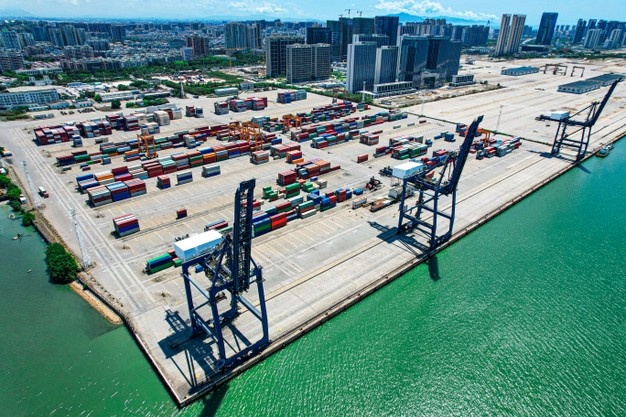In 2021, the profitability of sample enterprises decreased significantly. The sales of enterprises are poor, and the investment mentality is very cautious.
Real estate enterprises have changed from forced deleveraging to active deleveraging. The industry has ushered in a series of credit risk events in the continuous contraction.
The competition pattern of the industry has changed significantly. The amount of land added in the past six months is a key factor to verify whether the financing channels of enterprises are unblocked and whether the market share is likely to increase in the future.
The revenue increased steadily, but the profitability decreased significantly, and the net profit fell sharply year-on-year. The operating revenue of listed real estate enterprises (we choose the real estate enterprises with a market value of more than 10 billion that have published the annual report as the sample, hereinafter referred to as listed real estate enterprises or sample enterprises) increased by 17.0% year-on-year in 2021, and the growth rate is basically the same as that in 2020. However, the net profit margin decreased significantly to 10.0% and the gross profit margin decreased to 21.5%. Therefore, the net profit of listed real estate enterprises decreased by 19.3% year-on-year. Moreover, the settlement equity ratio continued to decline, and the performance of listed real estate enterprises decreased by 23.5%.
The enterprise's sales are not smooth, and the investment mentality is very cautious. In 2021, the sales volume of the sample enterprises increased by 4% year-on-year, and the sales area decreased by 1% year-on-year, slightly lower than the industry average level, and the industry head concentration decreased. This is because the sales of some large insurance companies are poor. The credit storm continues, and the decline in concentration will not change in 2022 (although the market share of large companies with high credit will rise). Due to the serious lack of opportunities in the land market in the first half of the year and the ups and downs in sales and financing in the second half of the year, most enterprises have a very cautious investment mentality. The sample enterprises with perfect disclosure accounted for 31% of the sales in the same period in 2021, while the land acquisition area accounted for 78% of the sales area in the same period. The industry reduced land acquisition and the net inventory decreased. Enterprises also slowed down the progress of projects under construction to varying degrees. The new construction plan formulated by the well disclosed sample enterprises at the beginning of 2022 decreased by 27% and the completion plan decreased by 11%. Some enterprises have significantly lowered their push plans.
Deep deleveraging and emergency equity financing. The net debt ratio of listed real estate enterprises at the end of 2021 is 52%, the balance sheet excluding advance receipts is 68%, the coverage ratio of cash to interest bearing liabilities within one year is 186%, and the process of deleveraging is still ongoing. The existence of off balance sheet liabilities may mean that the real deleveraging strength of the industry is more violent than that shown in the statements. The pre-sale of regulatory funds and the freezing of funds by partners make the overall amount of Book Monetary Funds of the enterprise more and more, but the credit risk becomes more and more intense. Some enterprises carry out "emergency equity financing", that is, issuing shares at low points to repay debts.
Drastic changes have taken place in the competition pattern of the industry. We note that unprecedented changes have taken place in the industry competition pattern in 2022, which not only means the survival of the fittest, but also means that the number of cooperation projects is decreasing and the land acquisition in the private market is declining. Overall, we believe that the total scale of land acquisition from October 2021 to March 2022 largely determines whether the industry ranking of enterprises will rise or fall in the future. Because the replenishment of land in the past six months can not only effectively improve profitability, but also increase marketable resources. Of course, this kind of land replenishment can better prove the good capital chain of enterprises than any bond repurchase and credit enhancement.
Risk tip: the risk of declining profitability of some enterprises, the risk that some regional policies are not timely and effective, and the risk that sales in some regions are greatly affected by the epidemic.
Investment strategy - from credit to efficiency. The focus of the market has been on credit in the past few months. We are also convinced that the market share of enterprises with high credit will increase significantly. However, we believe that in the next stage, efficiency will also return to the attention of investors, who will pay attention to every aspect of development capacity. We are optimistic about the sustainable investment opportunities of real estate Blue Chip enterprises under the background of broad policies, and recommend Poly Developments And Holdings Group Co.Ltd(600048) , Greentown China, Gemdale Corporation(600383) , Longhu group, Vanke enterprises, China Merchants Shekou Industrial Zone Holdings Co.Ltd(001979) , Midea real estate and China Resources Land.
